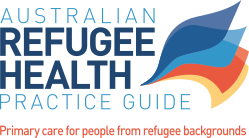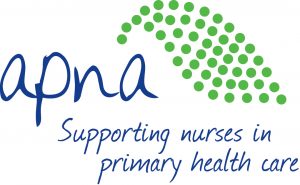Children
Also see adolescents
Table of contents
Key points
- Around half of all humanitarian arrivals to Australia are aged less than 18 years, with a high proportion of young children.
- Children who arrived as refugees or asylum seekers will have similar health problems to their Australian-born counterparts, but may also have health issues specific to their country of origin and migration experience.
- Trauma affects development and family functioning, and interrupted schooling is common – children may need healthcare and support related to their developmental and learning needs.
- Children may have an incorrect date of birth recorded on their migration paperwork, which is an important consideration when assessing growth, development, learning or school placement.
- The initial refugee health assessment is a starting point to link children with other universal service systems, and introduce longer-term preventative healthcare.
Overview
The World Health Organization defines children as 0–17 years, adolescent as 10–19 years, youth as 15–24 years and young people as 10–24 years. Humanitarian populations include a high proportion of children and young people. In 2016, 28% of the Australian humanitarian intake was aged less than 12 years, and 23% were aged 12–24 years. Families are often large, and there may be many children within a family group. Some refugee children arrive as unaccompanied humanitarian minors; other children of refugee-like background arrive under alternative visas (e.g. orphan relative) or as asylum seekers.
Considerations in working with children include their developmental stage and ability to express themselves, different types and presentations of medical conditions, and providing healthcare through parents/carers.
Approach to care
Early childhood is typically a period with multiple healthcare visits. The initial refugee health assessment provides a starting point to introduce longer-term preventative health care, for example, through catch-up immunisation, hearing and vision screening, dental referral, healthy eating advice and developmental surveillance. Additional supports for children are available through maternal and child health nursing, early childhood intervention, and the education system (through pre-schools and schools).
Children of refugee-like background will have similar health problems to their Australian counterparts (e.g. viral illnesses and injuries), but may also have health issues specific to their country of origin and migration experience.
Considerations
- Immigration Medical Examination (IME) is limited for children less than 11 years compared to adolescents and adults. Screening includes urinalysis (5 years and older), interferon gamma release assay (IGRA) or tuberculin skin test (TST) (2–10 years), chest x-ray if clinically indicated, and HIV screening if risk factors are identified. Unaccompanied minors (all ages) also have screening for HIV and HBsAg.
- Screening tests differ – they may have lower sensitivity or may not be validated in younger age groups, and the interpretation of test results may vary with age.
- Paediatric pathology specimen collection should be used to reduce the amount of blood drawn for screening tests.
- Tuberculin skin test (TST) preferred for tuberculosis screening in children less than 5 years.
- Catch-up vaccination and vaccine licensing varies with age. Children less than 5 years will need pneumococcal and Hib vaccines and additional doses of DTPa and IPV vaccines; hexavalent vaccine (DTPa-IPV-HBV-Hib) is licensed for use less than 10 years; MMR-V should not be used as the first dose less than 4 years.
- Medication dosing varies with age and medications may not be licensed for use in children.
- The impact of trauma and mental health problems may present differently in children. Consider functional impairment, developmental progress, attachment, behavioural and learning concerns, sleep issues and difficulties with attention/concentration, as well as mental health symptoms. Parent mental illness affects child wellbeing, and addressing both parent and child mental health is important.
- Family structures and parenting roles may change with migration, affecting settlement and child development. Exploring these aspects offers an opportunity to assess risk and resilience factors for children and families.
- Prior schooling may have been limited or interrupted, with implications for educational placement in Australia.
- Children may have an incorrect birthdate recorded on their migration paperwork; this is important to consider when assessing growth, development, learning and school placement.
- Link infants and children with the universal service system, which will also provide a safety net.
- Seek early paediatric review for complex child health issues, including physical health, developmental/behavioural concerns, disability, and age assessment. Paediatric review may also help facilitate mental health services where needed.
Links
RCH Center for Community Child Health




